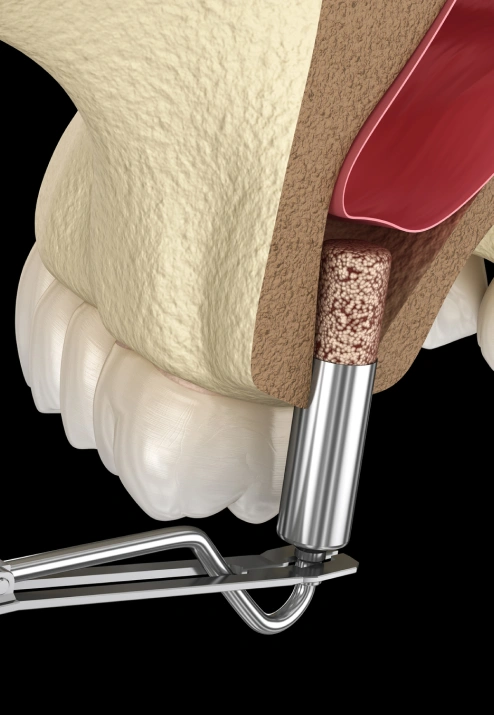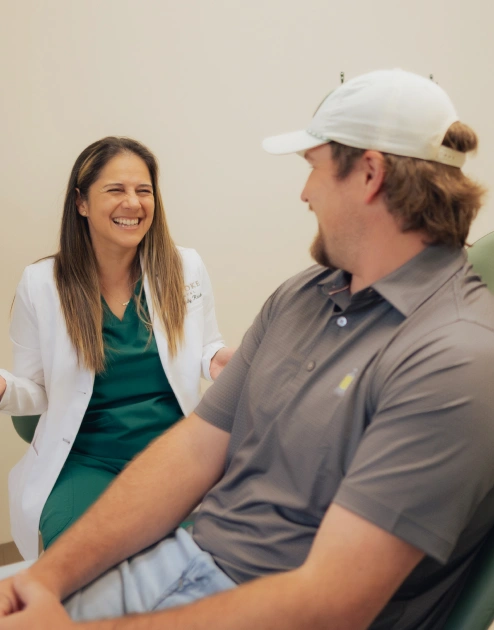678-552-4904

Expert Bone and Sinus Grafting in Newnan, GA
Bone and sinus grafting are advanced surgical techniques designed to correct deficiencies in jawbone volume and quality, which are often crucial for the successful placement of dental implants. Bone grafting entails transferring bone tissue—either from the patient (autograft), a donor (allograft), or synthetic materials—into areas where the jawbone has experienced deterioration or lacks sufficient volume. This procedure promotes new bone growth and improves the overall structure of the bone, providing a sturdy base for dental implants.
Sinus grafting is a specific variant of bone grafting that targets the upper jaw, particularly where the sinus cavities are located above the molars and premolars. During this procedure, the sinus membrane is gently lifted, and bone graft material is inserted into the sinus cavity to increase the bone height required for implant placement. Both procedures are aimed at restoring and enhancing bone volume, ensuring that implants are securely anchored and function effectively.
The Procedure of Bone Grafting
Bone grafting is a surgical procedure utilized to enhance or replace lost bone in various areas of the body, particularly in dentistry to prepare the jawbone for dental implants. The process starts with a comprehensive evaluation by the dentist in Newnan, GA, who will assess the patient's bone density and identify the area that requires augmentation. Based on the individual case, the grafting material may be obtained from the patient's own body (autograft), sourced from a donor (allograft), or created from synthetic materials (alloplast).
Once anesthesia is administered, the surgeon makes an incision at the site of the bone loss and carefully exposes the underlying bone. The grafting material is then placed in the prepared area to stimulate new bone growth. Afterward, the incision is closed with sutures, and the site is allowed to heal.
The Benefits of Bone Grafting
Strong Foundation for Implants
Prevents Ongoing Bone Loss
Restores Function and Comfort
Enhances Facial Appearance
The Procedure of Sinus Grafting
Sinus grafting, commonly referred to as sinus lift surgery, is a specialized procedure aimed at augmenting the upper jawbone in the region of the molars and premolars, creating adequate bone height for dental implant placement. The process begins with a comprehensive evaluation by the dentist, which includes X-rays or CT scans to assess the existing bone structure and the anatomy of the sinus cavity. After administering sedation, the surgeon makes an incision in the gum tissue to access the bone. A small opening is then created in the bone, allowing the sinus membrane to be carefully lifted to make room for the bone graft material. This graft material can be sourced from the patient (autograft), a donor (allograft), an animal (xenograft), or it can be synthetic.
Once the graft material is positioned, the surgeon sutures the incision closed, initiating the healing process. This healing phase, known as osseointegration, typically lasts several months, during which the graft integrates with the surrounding bone, forming a sturdy foundation for dental implants. Patients may experience some swelling and discomfort during recovery, which can be effectively managed with prescribed medications. Regular follow-up appointments are essential to track the healing process and ensure the success of the graft.
The Benefits of Sinus Grafting

Increases Upper Jaw Bone Volume
Provides a Stable Foundation
Enables Implant Eligibility
Reduces Risk of Implant Failure
Protects Sinus Health
Enhances Oral Function and Aesthetics

